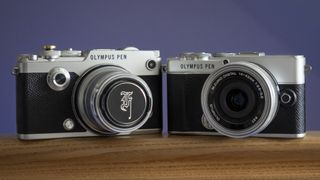If you're hunting for the best telephoto lens for your camera, you're in the right place. In this guide, we've assembled an exhaustive list of the best telephotos you can buy right now, from short teles to long ones, from zooms to primes, for every major system and mount on the market. Whatever your budget, whatever your shooting genre of choice, there should be a telephoto lens on this list for you.
Why use a telephoto lens at all? Lenses with a long focal length allow you to fill the frame with distant subjects, and that opens up all sorts of options for when you're working with subjects you can't physically get close to. Wildlife is an obvious example, as are sports and action – try photographing these with anything other than a decent tele lens, and all you'll get is a distant blur.
Of course, telephotos have plenty of other uses. Many portrait photographers favour short telephoto lenses, as they allow for tight focus on a subject, and compress facial features in a way that's flattering. They also make it easier to create images with artful blur, allowing the main subject to really pop. The narrow telephoto perspective also allows for their use in landscape and architecture shooting, providing a very different perspective than the wide-angle look that's standard in these genres.
If you want to know more about why you might choose a telephoto lens, scroll to the bottom of this article where we've put together a beginner's guide on the different types of telephoto and what they're used for.
As mentioned, in this guide, we've attempted to cover telephoto lenses for all the major systems photographers are using. This means we've got options for Canon (EF, EF-S, EF-M and RF), Nikon (F and Z), Sony, Fujifilm, Micro Four Thirds and Pentax. We've divided the guide up into sections for each one, to make it easier for you to find the lens you're looking for.
With all that in mind, here’s our pick of the best telephoto lenses to suit a wide range of cameras.
Best telephoto lenses for every system – the full list!
Why you can trust Digital Camera World
Canon
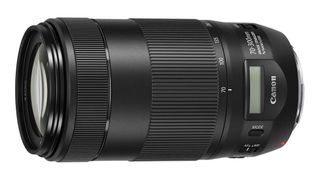
Specifications
Reasons to buy
Reasons to avoid
Canon makes a pretty good EF-S 55-250mm f/4-5.6 IS STM telephoto zoom for its APS-C format SLRs. It’s compact and lightweight at 70x111mm and 375g. Measuring 80x146mm and weighing 710g, this full-frame compatible lens is naturally larger and nearly twice the weight but, for our money, it’s more than twice as good. As well as having more powerful telephoto reach, equivalent to 480mm in full-terms, it boasts a super-fast Nano USM autofocus system, a more effective image stabilizer, and delivers sharper image quality. As a handling highlight, it also has an in-barrel information screen with an adjacent button for cycling through multiple modes. It’s our favourite telephoto zoom for APS-C format SLRs and also makes a great compact, budget telephoto for full-frame Canon cameras, including EOS R-series mirrorless models via a mount adapter.
Canon EF 70-300mm f/4-5.6 IS II USM full review

Specifications
Reasons to buy
Reasons to avoid
Canon’s own-brand EF 70-200mm f/2.8L IS III USM is a favourite with professional photographers all over the world but we prefer this direct competitor from Sigma. It’s similarly sturdy, with a magnesium alloy barrel and a full set of weather-seals, and boasts an optical path that includes no less than 11 top-performance FLD (‘Fluorite’ Low Dispersion) elements. Dual autofocus modes are available, giving priority to autofocus or manual override respectively. Focus on/hold buttons are built into the barrel, the action of which can be switched with some of Canon’s up-market cameras. There are also two switchable custom modes which you can set up with Sigma’s optional USB Dock, for adjusting the likes of autofocus speed and the distance of the range limiter, as well as how visual the stabilization effect is in the viewfinder. Speaking of which, the stabilizer is slightly more effective than in the Canon lens. The only downsides are that the Sigma is a bit bigger and heavier than most 70-200mm f/2.8 lenses, and only the tripod foot is detachable rather than the whole mounting ring.
Sigma 70-200mm f/2.8 DG OS HSM | S full review

Specifications
Reasons to buy
Reasons to avoid
Bucking the trend for 70-200mm lenses, this new zoom for Canon EOS R-series cameras has an inner barrel that extends as you sweep through the zoom range. It has a tough, weather-sealed build befitting its expensive price tag. The telescoping nature of the construction naturally enables a more compact stowage size and the lens is also comparatively lightweight at just 1,070g. For the sake of comparison, Sigma’s 70-200mm f/2.8 for SLRs weighs 1,805g. Performance is exceptional, with lightning-fast autofocus driven by dual Nano USM actuators and triple-mode 5-stop optical stabilization. Sharpness is amazing throughout the entire zoom range, even when shooting wide-open at f/2.8.
Canon RF 70-200mm f/2.8L IS USM full review
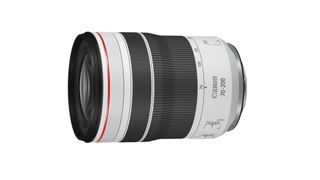
Specifications
Reasons to buy
Reasons to avoid
Only slightly bigger than a RF 24-105mm f/4 standard zoom, the Canon RF 70-200mm f/4L IS USM is an incredibly compact telephoto zoom lens. Weighing just 695g and no bigger than a can of Coke when collapsed, it is about the same length as the Canon EF 70-200mm f/4L IS II USM when fully extended. Just like the f/2.8L version above, the RF 70-200mm f/4L IS USM enjoys Canon's floating mechanism dual Nano USM system that provides high speed AF that’s ideal for both stills and video. It's a shame that it's not compatible with the Canon Extender RF 1.4x and Canon Extender RF 2x, as the protrusions of these teleconverters will not physically fit, but it will deliver 5 stops of compensation when used on non-IBIS bodies like the Canon EOS R and Canon EOS RP. Even better is when you mount the lens on either the Canon EOS R5 and Canon EOS R6, though, as it offers 7.5 stops of stabilization.
Canon RF 70-200mm f/4L IS USM full review
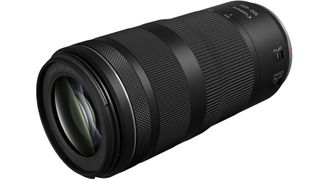
Specifications
Reasons to buy
Reasons to avoid
Compact and lightweight for a super-telephoto zoom, the Canon RF 100-400mm f/5.6-8 IS USM looks and feels very much like shooting with a classic 70-300mm lens on an APS-C format camera. Naturally though, it’s designed for EOS R-series full-frame bodies, on which it’s an excellent fit, making for a slimline and easily manageable overall package. Autofocus is super-fast, image stabilization is highly effective and image quality is highly impressive in all respects, with the caveat that sharpness drops off noticeably when combining close focusing distances with the longest zoom setting. The aperture rating of f/8 at the long end of the zoom range might be a bit slower than some might like, but that’s the price you pay for the conveniently downsized design.
Canon RF 100-400mm f/5.6-8 IS USM full review

Specifications
Reasons to buy
Reasons to avoid
Canon EOS M users needn't miss out on telephoto goodness. The Canon EF-M 55-200mm f/4.5-6.3 IS STM is a pleasingly compact zoom that complements the cameras it pairs with, and also provides great performance into the bargain. In our review, we were hugely impressed with the snappy autofocus, as well as the 3.5-stop image stabilisation that can be hugely helpful in a low-light pinch. The aperture rating is a little modest, and sharpness could be improved, but this is in general a good all-purpose telephoto for EOS M users.
Canon EF-M 55-200mm f/4.5-6.3 IS STM full review
Nikon
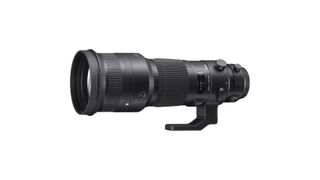
Specifications
Reasons to buy
Reasons to avoid
Playing Nikon and Canon at their own game, Sigma has come up with a hugely impressive telephoto prime that undercuts the price of the manufacturers' own-brand versions. The Sigma 500mm F4 DG OS HSM Sports is a tank, big and heavy, but with features and image quality to match. Its autofocusing is blisteringly quick, and it produces images that are beautifully sharp, aided by the optical stabiliser. In short, it's basically everything a sports shooter could want; so much so in fact that it's a shame you can't get it in a native mirrorless mount for Sony or L-mount! Regardless, if you shoot with a Nikon, Canon or even Sigma camera (there are some of you out there), this is one of the best-value sports lenses you can get.
Sigma 500mm F4 DG OS HSM Sports full review

Specifications
Reasons to buy
Reasons to avoid
Nikon’s full-frame compatible 70-300mm lenses have been highly regarded since the heyday of 35mm film cameras but this latest edition is by far the best yet. Compared with the previous version, the 4.5-stop stabilizer adds two full stops of effectiveness and gains Nikon’s more recent ‘Sport’ mode, while the stepping motor-based autofocus system is both faster and practically silent in operation. The lens also gains an electromagnetically controlled aperture diaphragm, which enables greater exposure consistency when shooting in rapid continuous drive. However, the autofocus system and aperture mechanism make the lens incompatible with some older Nikon DSLRs, including the D3000 and D5000. Image quality is super-sharp for this class of telephoto zoom, making it a great lightweight choice for both DX and FX format SLRs, as well as for mirrorless Z-series cameras via an FTZ mount adapter.
Nikon AF-P 70-300mm f/4.5-5.6E ED VR full review

Specifications
Reasons to buy
Reasons to avoid
The latest Nikon AF-S 70-200mm f/2.8E FL ED VR is undeniably a superb lens but it doesn’t do anything better than Sigma’s alternative zoom, which costs barely more than half the money. Indeed, the Sigma even undercuts Nikon’s lower-budget 70-200mm f/4 lens for price. Like the top-flight Nikon, the Sigma has fully a professional-grade, robust and weather-sealed construction and impeccable handling, which includes customisable focus-on/hold buttons around the barrel. Another similarity is switchable autofocus modes that give priority either to autofocus or to manual override.
The Sigma adds two further customisable setups for the speed of its autofocus system, the distance at which its autofocus range limiter works, and how visible the effect of stabilization is in the viewfinder. These can be configured via Sigma’s optional USB Dock, after which they’re available via a switch on the lens. Based on our lab-tests and real-world testing, the Sigma matches the much pricier Nikon for performance and image quality at every step.
The Sigma also comes at a similar price to Nikon's own budget version of a 70-200mm, the Nikon AF-S 70-200mm f/4G ED VR, however the Sigma is again a superior choice there thanks to its extra stop. Unless you really have to have a Nikon-brand lens, the Sigma is the all-around best option.
Sigma 70-200mm f/2.8 DG OS HSM full review
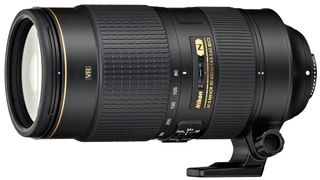
Specifications
Reasons to buy
Reasons to avoid
A 70-300mm lens is all very well, as is a 100-400mm lens, but this Nikon optic has an edge over both. The Nikon AF-S 80-400mm f/4.5-5.6G ED VR is a revitalised version of an original lens that was something of a misfire, but a lot of those problems have no been corrected – the most glaring one being that the first lens's dreadfully slow autofocus, which is now rectified with a super-fast ultrasonic ring-type autofocus motor. In our lab tests, we were also impressed with the sharpness of the Nikon AF-S 80-400mm f/4.5-5.6G ED VR, especially in the centre. It's an all-around excellent lens, especially for such a generous zoom range.
Nikon AF-S 80-400mm f/4.5-5.6G ED VR full review
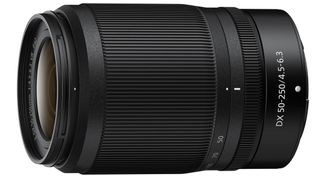
Specifications
Reasons to buy
Reasons to avoid
Despite its powerful ‘effective’ zoom range of 75-375mm in full-frame terms, this DX format is particularly compact and lightweight, ideally matched to the diminutive Nikon Z 50 mirrorless camera body. Part of the weight-saving comes from a plastic rather than metal mounting plate, but the overall build still feels pretty sturdy. A retractable design enables a compact stowage size, as also featured in its Z DX 16-50mm stablemate. Both have a relatively ‘slow’ f/6.3 aperture rating at the long end of the zoom range, but the telephoto zoom’s highly efficient 5-stop stabilizer helps to keep things steady. Ideal for shooting movies as well as stills, autofocus is virtually silent and the customizable control ring enables silent, stepless aperture control as well as alternative functions.
Nikon Z DX 50-250mm f/4.5-6.3 VR full review
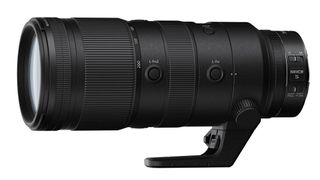
Specifications
Reasons to buy
Reasons to avoid
The Nikon Z 6 and Z 7 are excellent mirrorless full-frame cameras but the most impressive thing about the system overall is the razor-sharp image quality delivered by Nikon’s Z-mount ‘S-line’ lenses. The 70-200mm f/2.8 hits new heights, thanks to a premium optical design that includes two aspherical elements, one fluorite element, no less than six ED (Extra-low Dispersion) elements and an SR (Short-wavelength Refractive) element. ARNEO Coat and Nano Crystal Coat are also applied to minimize ghosting and flare. Other highlights include hugely effective 5.5-stop optical VR (Vibration Reduction) and super-fast yet virtually silent autofocus system. Everything’s wrapped up in a solid, weather-sealed casing with a fluorine coating on the front element. Dual customizable Lens-function buttons and a customizable control ring enhance handling although, typical of 70-200mm f/2.8mm lenses, it’s quite big and heavy.
Nikon Z 70-200mm f/2.8 VR S full review
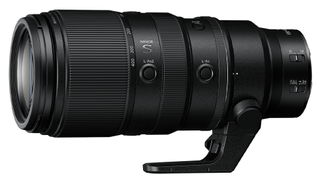
Specifications
Reasons to buy
Reasons to avoid
It’s been a long wait, but now we have a 100-400mm lens for Nikon’s Z-mount mirrorless cameras. And it’s a lens that’s certainly been worth the wait, as the Z 100-400mm f/4.5-5.6 VR S is bristling with technology and handling exotica, and it delivers first-rate performance in all respects. You get rapid autofocus and highly effective 5.5-stop VR with superb image quality. All-round performance is top-drawer, while handling is enhanced by customizable function buttons and an additional ‘de-clicked’ control ring, along with a multi-function OLED display. It’s a weighty lens with a hefty price tag, but a worthy Z-mount addition.
Nikon Z 100-400mm f/4.5-5.6 VR S full review
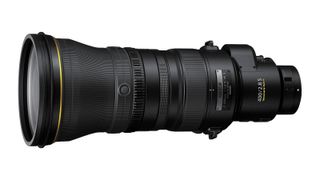
Specifications
Reasons to buy
Reasons to avoid
Fair enough, not many people are going to get past that price tag. But we couldn't help including the Nikon Z 400mm f/2.8 TC VR S, one of the most stunning lenses we've ever reviewed, and one of the best telephotos ever made. This gives the Z-mount line real heft, and is a worthy companion to the stunning Nikon Z9. Its built-in 1.4x teleconverter is designed to complement the optical qualities of the lens, and gives you even more reach. In terms of performance, the lens is faultless. Sharpness is frighteningly good, autofocus performance is blistering, the stabilisation is rock-steady. This is a lens you could shoot with for the rest of your life and never feel like you were missing out.
But all right, not everyone has $14,000 to spend on a lens. For some excellent, less wallet-lightening alternatives for Nikon Z, consider the Nikon Z 400mm f/4.5 VR S, or the super-telephoto Nikon Z 800mm f/6.3 VR S, both of which received the full five stars in our reviews.
Nikon Z 400mm f/2.8 TC VR S full review
Fujifilm
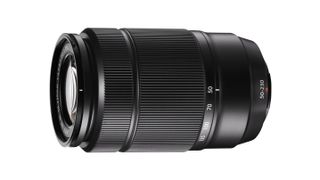
Specifications
Reasons to buy
Reasons to avoid
This telephoto zoom from Fujifilm is not just budget-friendly, but back-friendly too, as you won't be breaking yours carrying it around all day. Weighing in at an impressively slender 370g, it complements well the relatively light X-series mirrorless cameras, and for many Fuji users, it might be the first additional lens they buy after their kit lens. If you do, you'll appreciate the generous maximum magnification ratio, the 3.5-stop stabilizer, and the reliable autofocus. When we subjected the lens to our lab testing, we found that its sharpness was good rather than great. Some users may also bemoan the fact that the mounting plate is plastic, not metal. These are expected compromises you'll make for a lens this small and this cheap – you just need to be aware of what you're in for going in.
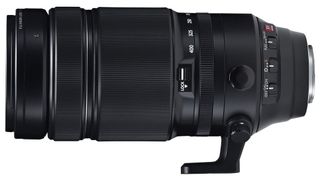
Specifications
Reasons to buy
Reasons to avoid
On an Fujifilm X APS-C sensor, this powerful telephoto zoom can deliver a maximum focal length of 609mm, and this plus its extensive weather-sealing makes it an excellent choice for outdoor wildlife photography. It's also got fast, accurate autofocus that can handle moving subjects, as well as a 5-stop optical stabilisation system that lives up to its billing. In our review, we found sharpness to generally be very impressive in real-world situations, with some fall-off detected in lab tests, and distortion was controlled exceptionally well. This is a really powerful lens for Fujifilm users, though be aware that at almost 1.4kg it is on the heavy side.

Specifications
Reasons to buy
Reasons to avoid
Fujifilm’s telephoto zoom offerings for its X-mount cameras include the compact and budget-friendly XC50-230mm f/4.5-6.7 OIS II, and the more advanced, highly capable XF55-200mm f/3.5-4.8 R LM OIS. However, for the ultimate in performance, build quality and overall image quality, this XF50-140mm f/2.8 WR OIS lens is the one to go for. Taking the 1.5x crop factor into account, it has a 75-210mm ‘effective’ zoom range, competing with popular 70-200mm f/2.8 lenses for full-frame cameras. High-end glass includes five ED (Extra-low Dispersion) elements and one Super ED element, along with high-tech HT-EBC (High Transmittance Electron Beam Coating) and Nano-GI (Gradient Index) coating. It’s not overly large for an APS-C format lens, despite having fully internal zoom and focus mechanisms, the latter being driven by a speedy triple linear motor. There’s also a highly effective 5-stop optical image stabilizer. Everything’s built into a particularly tough and durable package and, if you feel the need for a little extra reach, optional kits are available that include either a 1.4x or a 2.0x teleconverter.
See our full Fujifilm XF50-140mm f/2.8 WR OIS review
Micro Four Thirds
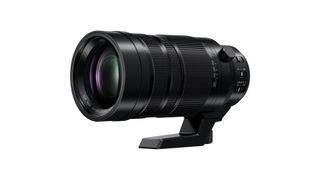
Specifications
Reasons to buy
Reasons to avoid
The 100-400mm focal range is hugely popular – there's a reason that our best 100-400mm lenses guide has so many entries! It's a versatile focal range for telephoto shooting, making a broad range of subjects possible to capture, and the Panasonic Leica DG Vario-Elmar 100-400mm f/4-6.3 ASPH. POWER O.I.S. Lens is a fine example. Of course, the fact that it's a Micro Four Thirds lens means that it actually performs like a 200-800mm lens, making it all the more potent for telephoto shooting.
The Power OIS stabilisation system is hugely impressive, though the lens does lack the switchable stabilisation modes that some comparable optics have. Image quality is generally very good, especially at the wide end, with a slight sharpness drop-off towards the telephoto end of the zoom. The relative lightness of the lens is welcome too, especially for MFT users who are working with smaller, lighter system cameras.
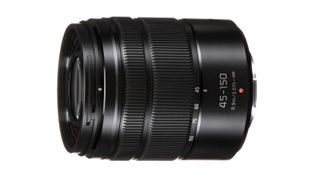
Specifications
Reasons to buy
Reasons to avoid
With their downsized image sensors, Micro Four Thirds cameras have a 2x crop factor that extends the telephoto reach of lenses. Indeed, the Panasonic 45-150mm gives has an ‘effective’ zoom range of 90-300mm but is still impressively small and weighs a mere 200g, making it a good match on even the most compact and slim-line Olympus and Panasonic camera bodies. The optical design includes two aspherical elements and an ultra-high refractive index element, autofocus is fast and near-silent, and the lens has a ‘Mega Optical Image Stabilizer’. No official rating is given for the last of these but, in our tests, it only gave an effectiveness equivalent to about two stops. Even so, the lens delivers very pleasing image quality and is remarkably inexpensive to buy. All things considered, it’s knockout value for money - see our full Panasonic Lumix G Vario 45-150mm f/4.0-5.6 Asph Mega OIS review.
L-mount

20. Panasonic LUMIX S 70-300mm F4.5-5.6 MACRO O.I.S.
Specifications
Reasons to buy
Reasons to avoid
It took a little while for L-mount to get a 70-300mm lens, but the Panasonic LUMIX S 70-300mm F4.5-5.6 MACRO O.I.S. is worth the wait (and worth the weight). An optically stabilised lens with a fast, capable autofocus system, it provides a speedy and effective way to shoot telephoto subjects. The eleven-bladed aperture is a nice touch too, ensuring the lens can produce pleasing bokeh for portraits that pop.
The price is a little on the high side, as it puts the lens in a similar bracket to the likes of Sony's G Master lens or Canon's L glass. Is it on a par with these lenses in quality terms? Not quite. There are a few softness issues when shooting wide open at the telephoto end, which are expected in most lenses, but arguably not ones at this price. Still, let's not get carried away: this is a highly effective and capable telephoto for L-mount, and having that extra 100mm of reach opens up all sorts of shooting possibilities.
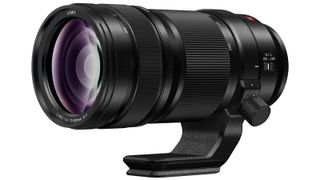
Specifications
Reasons to buy
Reasons to avoid
This telephoto zoom weighs in at just under a kilogram and makes for well-balanced shooting with Panasonic S-series cameras. The combination is also perfectly balanced on a monopod or tripod, if you use the removable tripod mounting ring that’s supplied with the lens. The high-tech optical path delivers sumptuous image quality and the constant f/4 aperture rating enables a fairly tight depth of field, while the quality of bokeh is nice and smooth. Autofocus is super-fast and the built-in optical image stabilizer works in conjunction with the 5-axis, sensor-shift stabilizers of S-series bodies to deliver up to 6-stop performance. It’s quite pricey for a 70-200mm f/4 zoom but you definitely get what you pay for, and it’s only about two-thirds the weight of Panasonic’s pricier 70-200mm f/2.8 zoom.

Specifications
Reasons to buy
Reasons to avoid
Nicknamed the ‘light bazooka’, Sigma launched a relatively compact and lightweight 100-400mm zoom for Canon and Nikon DSLRs back in 2017. Three years down the line, this new ‘DN’ edition is now available for Leica L and Sony E mount mirrorless cameras. The optical path is upgraded and includes a top-notch FLD (‘Fluorite’ Low Dispersion) element, in addition to four SLD (Special Low Dispersion) elements. Other enhancements include a customizable Focus-lock button and a TS-111 tripod mounting ring, which is available as an optional extra (£139/$130). We’ve found the new DN lens to be sharper than the original design, throughout the entire zoom range. Overall, it’s an excellent performer at a very attractive price.
Read more: Sigma 100-400mm f/5-6.3 DG DN OS | C review
Pentax
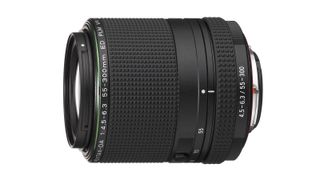
Specifications
Reasons to buy
Reasons to avoid
This Pentax lens is remarkably small for a 55-300mm zoom, partly because it’s designed exclusively for APS-C format cameras but mostly because it has a retractable design for compact storage. There’s nothing small about the zoom range, however, which is equivalent to 82.5-450mm on a full-frame camera. Build quality is very good, featuring weather-seals and a fluorine coating on the front element, while optical highlights include ED elements and Pentax’s HD coating to reduce ghosting and flare. The stepping motor-based autofocus system is ultra-quiet compared with some Pentax lenses, but is still audible and not particularly fast. Pentax’s ‘Quick-Shift Focus System’ enables easy switching between autofocus and manual focus. There’s no optical stabilizer, the lens instead relying on the sensor-shift stabilization of Pentax camera bodies, which isn’t always ideal when shooting with telephoto lenses. Image quality is very good overall but sharpness drops off a bit at the long end of the zoom range (see our full Pentax 55-300mm f/4.5-6.3 DA PLM WR review).
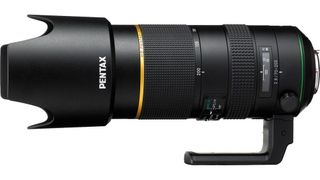
Specifications
Reasons to buy
Reasons to avoid
This ‘all-weather’ lens from Pentax’s full-frame stable is typically solid and well-built, with a ‘*’ designation that denotes top performance. As such, the optical path includes four super-low dispersion elements, two ED (Extra-low Dispersion) elements and a pair of Super ED glass elements, which have similar optical properties to fluorite glass. Exotic coatings include nano-structure Aero Bright Coating II and multi-layer HD Coating, plus a Super Protect coating on the front element to repel moisture and grease. The lens employs Pentax’s ‘Quick-Shift’ focus system, which enables instant swapping between autofocus and manual focusing, while autofocus comes with switchable auto-priority and manual-priority modes. It’s quite weighty for a 70-200mm f/2.8 lens but the tripod mounting collar is completely removable. Image quality and overall performance are impressive on Pentax’s full-frame DSLRs, while the ‘effective’ zoom range is boosted to 107-307mm on an APS-C format body. See our full HD Pentax-D FA* 70-200mm f/2.8 ED DC AW review.
Sony
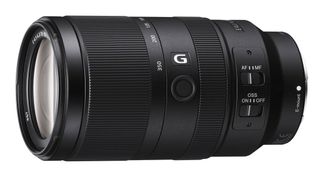
Specifications
Reasons to buy
Reasons to avoid
Sony recently launched a highly impressive pair of up-market lenses for its A6000-series cameras, in the shape of the E 16-55mm f/2.8 G standard zoom and this telephoto lens. Unlike its smaller companion, the telephoto zoom doesn’t have a fast, constant aperture rating and drops to f/6.3 at the long end. Even so, that’s not uncommon for recent zoom lenses for mirrorless cameras, from a variety of manufacturers. The upside is that the zoom range is particularly generous, equating to 105-525mm in full-frame terms and taking the lens into super-telephoto territory. One aspherical element and three ED (Extra-low Dispersion) elements are featured in the premium optical design An XD (eXtreme Dynamic) linear motor powers the high-speed autofocus system, which includes a customisable focus hold button on the side of the barrel. No official rating is given for the Optical SteadyShot system but it gave a mediocre 3-stop effectiveness in our tests. The weather-sealed build is impressively robust but reasonably lightweight. Image quality is superb.

Specifications
Reasons to buy
Reasons to avoid
Sony’s flagship full-frame compatible 70-200mm zoom for its E-mount mirrorless cameras has G Master status, delivering superb sharpness along with beautifully smooth bokeh, aided by a well-rounded 11-blade aperture diaphragm. Posh glass includes a mix of nine Aspherical, XA (eXtreme Aspherical), ED (Extra-low Dispersion) and Super ED elements, in the 23-element line-up. Nano AR coating is applied to minimise ghosting and flare. The lens is strongly built with multiple weather-seals, autofocus is very rapid, and handling benefits from a switchable dual-mode optical image stabilizer, a focus range limiter switch, and multiple autofocus hold buttons. We found the performance of optical stabilization to be fairly mediocre but it’s boosted when combined with the in-body stabilizers featured in recent Sony mirrorless cameras.
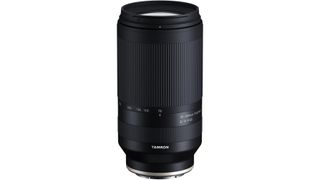
Specifications
Reasons to buy
Reasons to avoid
Tamron has carved out something of a niche making affordable lenses for Sony E-mount, and a fair few of them have been really quite impressive. The Tamron 70-300mm f/4.5-6.3 Di III RXD is not the sharpest tool in the box, nor the most sophisticated, but it is a pretty capable telephoto available at a very reasonable price, and should especially suit users of cameras at Sony's cheaper end, like the A6000 and its successors.
Central sharpness is excellent on this lens, but it does fall off towards the edges of the frame. It's also worth noting that the lens has no optical stabilisation, so if you're using an older camera without IBIS, you might find pin-sharp shots a little more difficult to achieve. It's not a ruinous issue, just something to bear in mind.
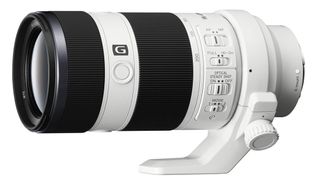
Specifications
Reasons to buy
Reasons to avoid
If money is no object, Sony’s FE 70-200mm f/2.8 G Master OSS is a cracking telephoto zoom. However, it’s a weighty beast at 1,480g and feels a bit of a mismatch for slim-line A7 and A9 series camera bodies. This f/4 model is much more manageable, tipping the scales at 840g, and it’s much more affordable to buy. There’s no shortage of high-tech attractions, including precision ‘advanced aspherical’ and Super ED elements, along with Nano AR coating. Dual-mode optical stabilization includes switchable static and panning modes, and the autofocus system is super-fast, based on twin linear motors. Image quality is superb in all respects, although stabilization performance is a bit lacklustre. Even so, that’s less of an issue on current and recent Sony cameras that feature sensor-shift stabilizers. This lens is the sensible choice for Sony’s full-frame mirrorless cameras, unless you really feel the need for the G Master lens’s extra f/stop.
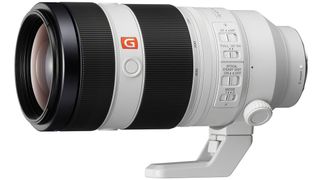
Specifications
Reasons to buy
Reasons to avoid
Barely any larger and slightly lighter than Sony’s 70-200mm G Master, this super-telephoto lens has a fundamentally different design, in that the inner barrel extends as you stretch through the zoom range. Even so, it’s very solid and well-built, with similar handling characteristics that include dual-mode optical stabilization for static and panning shots, an autofocus range limiter switch, and multiple autofocus hold buttons. The 100-400mm lens also adds an adjustable friction damper for the zoom ring, due to the telescoping nature of the design. The optical path includes two ED (Extra-low Dispersion) elements and one Super ED element, while autofocus is driven by the speedy combination of a double linear motor plus a DDSSM (Direct Drive Super Sonic Motor). Sharpness and contrast are excellent, as is the creamy quality of bokeh, but the optical stabilizer has lacklustre performance unless combined with in-body stabilization on later Sony camera bodies.
Read more: Sony FE 100-400mm f/4.5-5.6 G Master OSS review
How we test lenses
We test lenses using both real world sample images and lab tests. Our lab tests are carried out scientifically in controlled conditions using the Imatest testing suite, which consists of custom charts and analysis software that measures resolution in line widths/picture height, a measurement widely used in lens and camera testing. We find the combination of lab and real-word testing works best, as each reveals different qualities and characteristics.
Best telephoto lens: what to look for
If you're embarking on handheld telephoto shooting, image stabilization can be a huge help for getting consistently sharp shots. The optical stabilizers that built into telephoto lenses often come with auto panning detection, or give you the option of manually switchable static and panning modes. The latter means that when panning horizontally, stabilization is only applied in the vertical plane.
If you're using a camera that features sensor-shift stabilization, optical stabilization is less important and many manufacturers will omit it in the design of lenses compatible with these cameras. However, some will allow the optical and in-camera stabilization systems to work in tandem, delivering even more stabilization than either system would on its own.
For full-frame cameras, the most budget-friendly telephoto lens is usually a 70-300mm telephoto zoom with a variable aperture rating, typically going from f/4 to f/5.6 throughout the zoom range. This type of lens can generally be squeezed into a very compact body, making them more portable than similar optics,
The next step up for full-frame cameras is a 70-200mm lens. It might seem strange that a more expensive class of lens has less powerful telephoto reach, but the main advantage here is that these lenses will generally have a faster aperture rating of f/2.8 or f/4, and it will remain constant throughout the entire zoom range. These lenses are favoured by professionals, and so unsurprisingly, 70-200mm f/2.8 telephoto zooms can be much pricier. They're often heavier too, as the diameter of optical elements towards the front of the lens needs to be a lot bigger. You don't get the zoom range of a cheaper telephoto lens, but you do get a big jump in image quality and low-light performance, and better separation between your subject and its background, thanks to the wider lens apertures.
Best telephoto lenses: Full frame vs APS-C
Lenses are designed to match the size of the camera's sensor, so they are either 'full frame' lenses or 'APS-C' lenses.
You can use full-frame telephoto zooms on APS-C format Canon, Nikon and Sony cameras. The 1.5x or 1.6x crop factor boosts the ‘effective’ telephoto zoom range giving you much more powerful reach. Another bonus is that you’ll only be using a relatively small, central area of the image circle produced by the lens, where image quality is at its best.
But you can also get lenses that are specifically designed for APS-C sensors. The advantage is that they are smaller, lighter and less expensive than full frame lenses. However, you can't use these APS-C lenses on full frame cameras (not without using 'crop modes' which you will want to avoid.
A full frame lens is ideal for both camera sizes, but getting an APS-C lens for an APS-C camera can save both weight and cash.
Read more:
• These are the best lenses for landscapes right now
• We pick the best budget telephoto lenses
• The best lenses for bird photography
• What are the best camera lenses to get?



